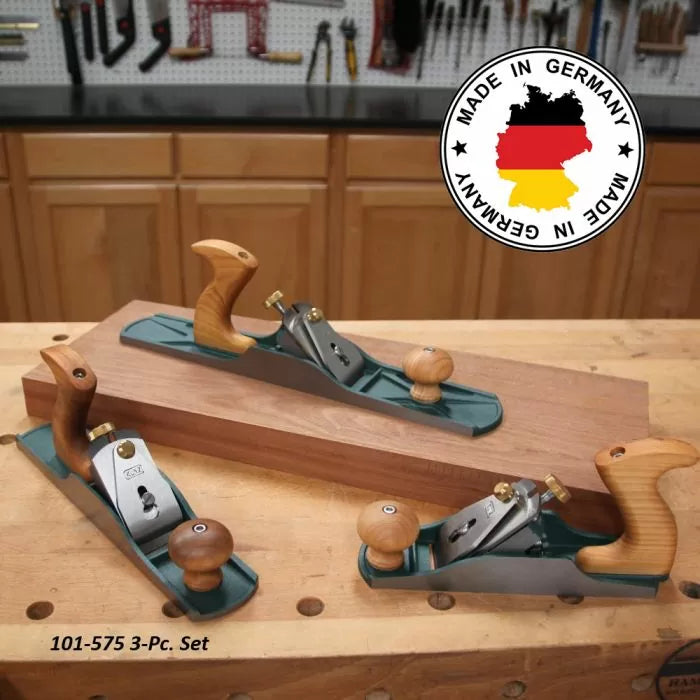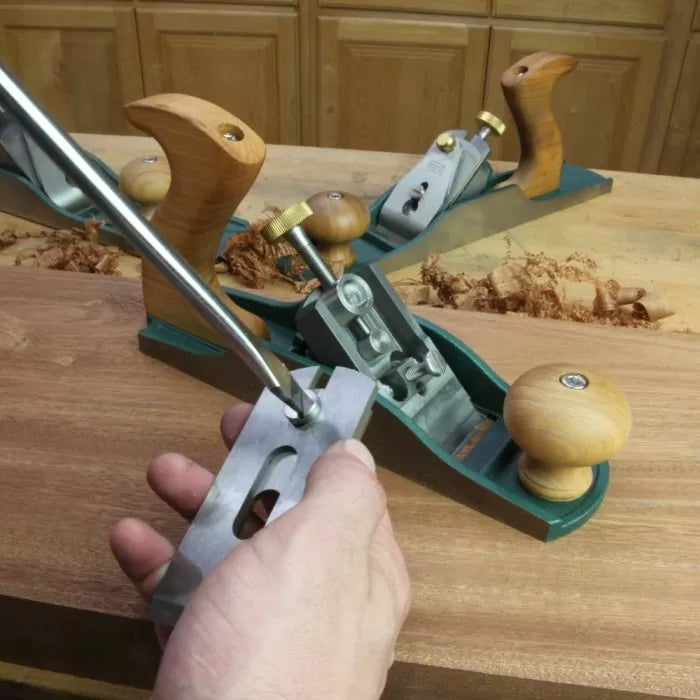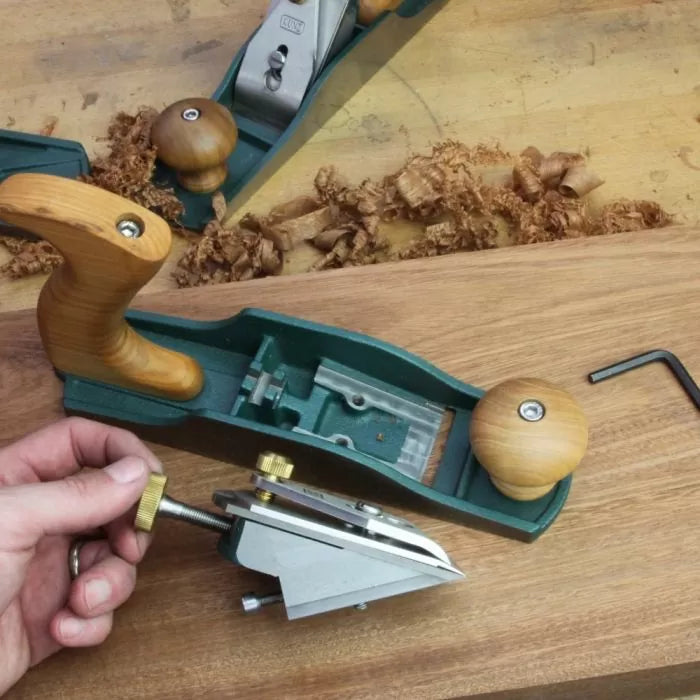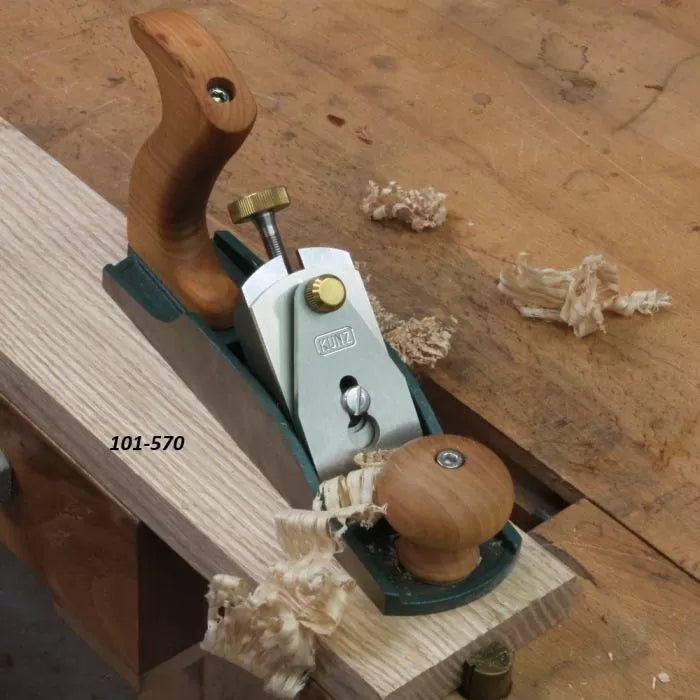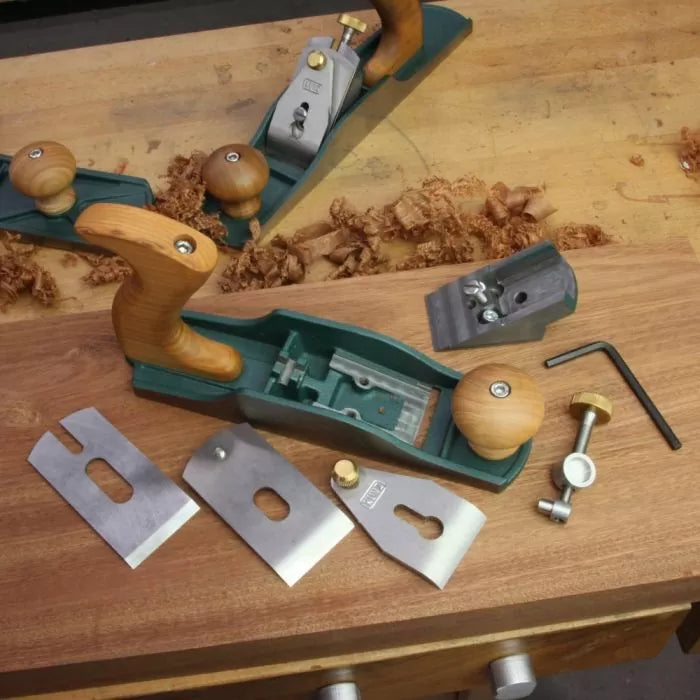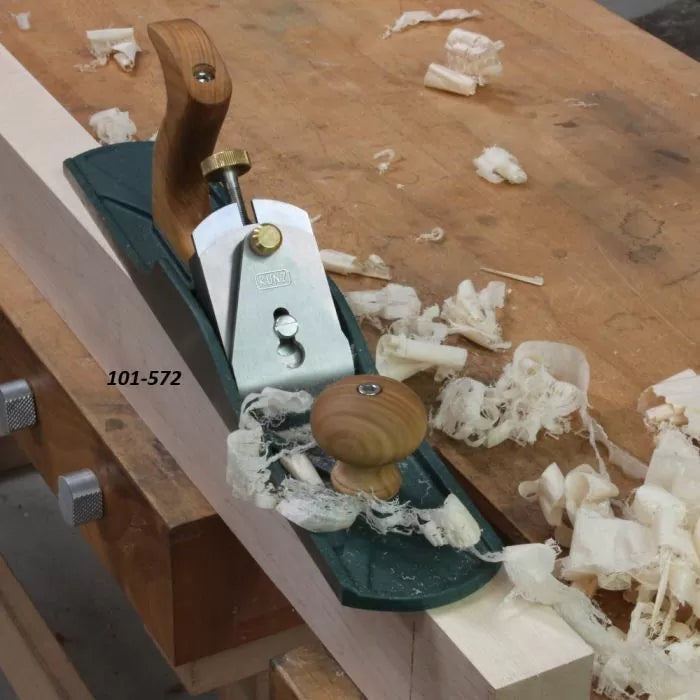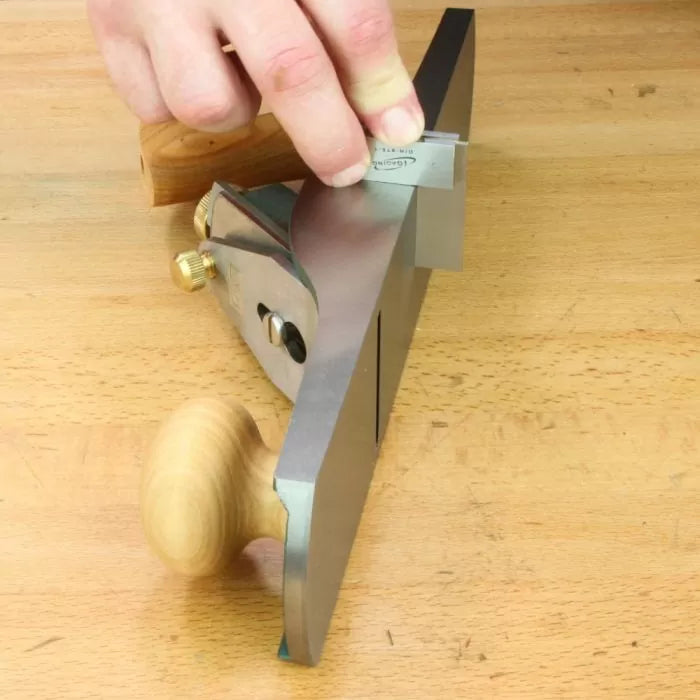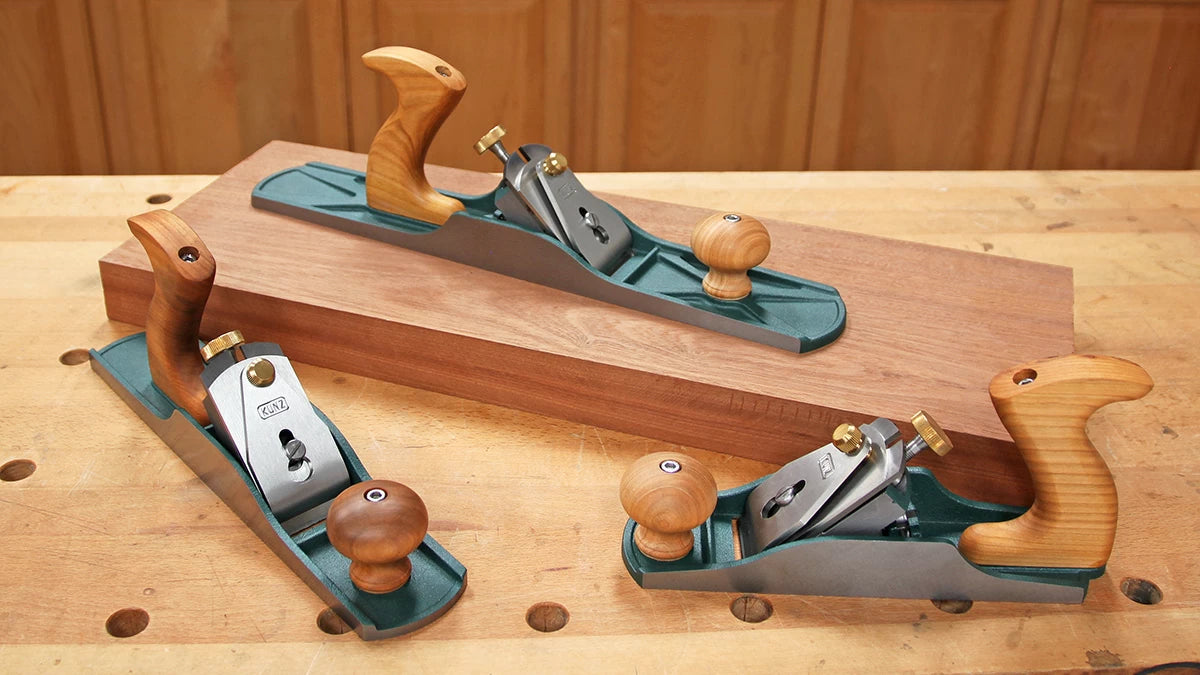
Kunz Plus Bench Planes are not the same Kunz planes with which you may be familiar. While Kunz is an older German company, they have incorporated innovative improvements to classic hand plane design into these tools. These planes are manufactured from start to finish in Germany and are a step beyond Kunz's standard bench planes, representing premium materials forged with German precision engineering.
Not Just A Decorative Antique
Even if you are mainly a machine-based woodworker, you ought to have a good quality bench plane in your shop. Your bench plane shouldn't be a decorative paperweight. You need one that is ready to use. Sure, you can restore an old plane. Unfortunately, this requires finding a serviceable plane—an increasingly rare commodity. More importantly, it requires a time investment that likely takes away from your time for woodworking.
The other option is a new plane. A few excellent plane makers are still operating, but they come at a premium price. Buying a lesser-quality new plane usually means you'll spend more time fettling than you would with an old plane and still have a paperweight (you needn't have bothered). Infinity Tools is proud to offer the Kunz Plus #4 Smooth Plane, #5 Jack Plane, and #6 Fore Plane to get you there quicker. These three planes can handle most of the planing tasks of the modern woodworker and represent a premium, high-quality tool at a competitive price.
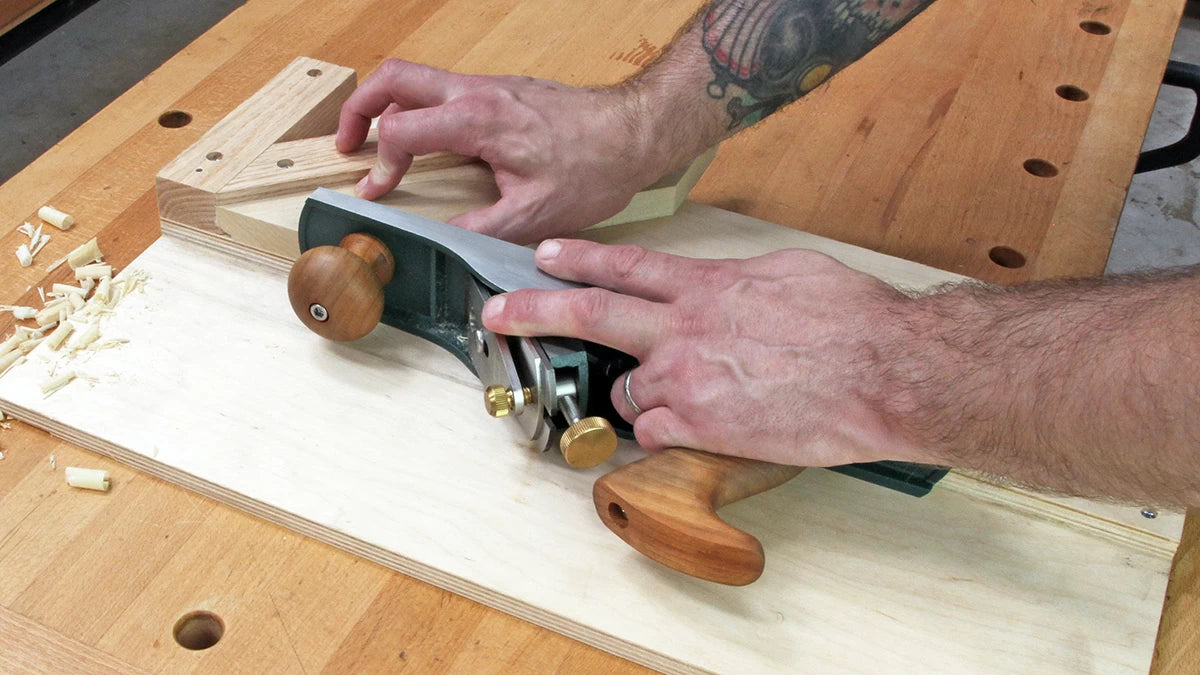
Refining Your Work
The key word here is "refining." There is no better tool for refining joints than hand planes. No one expects you to mothball your power planer, jointer, or other power tools, but sometimes a hand plane can do things that might prove difficult with a machine. I try to do as much work as possible with hand tools, but that's my preference—I'm certainly not knocking machines. While I work in the woodworking industry, the act itself is still a hobby for me. I don't need the speed of machines to meet deadlines or keep customers happy. Even if I used only machines, I would always return to planes in certain situations.
One place bench planes shine in this respect is sneaking up on and dialing in miters on a shooting board. I can't speak for everyone, but no matter how finely tuned my table or miter saw setup is, I am rarely happy with the results right off the saw. A shooting board is often the way to get that tight-fitting seamless miter, especially in noticeable joints like picture frames. Kunz manufactures its Plus Bench Plane bodies from stress-relief annealed grey-cast iron. The soles are expertly machined to be flat and square to the oversized cheeks. The care taken in casting and machining these plane bodies helps them excel on the shooting board.
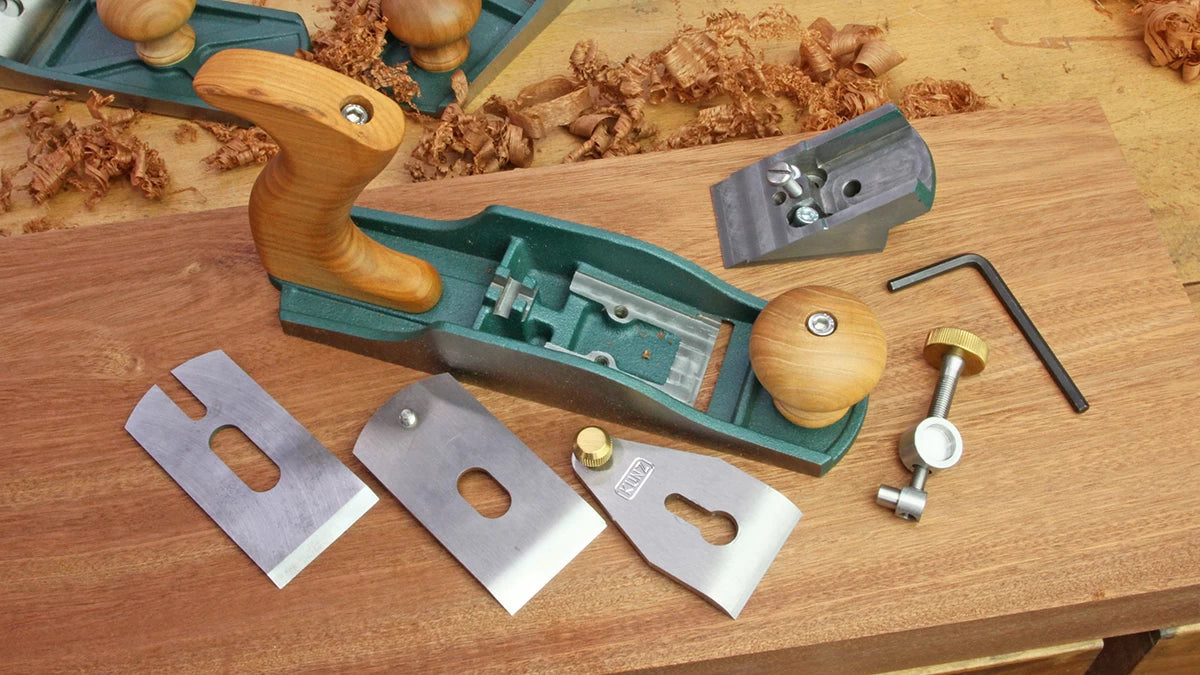
High-Quality Components Mean High-Quality Results
Sometimes you need to very slightly trim an edge, smooth a surface, or tame a spot of wild grain that your power planer wanted to mangle. Any of the aforementioned situations make a hand plane almost indispensable. Achieving the desired result does require a tool that functions well. Kunz Plus Bench Planes' high-quality components and unique design features contribute significantly to their functionality. The short and stout, 1/8" thick plane iron, made from optimized tool steel, hardened to RC60-62, prolong life and edge retention. The short length leaves more clearance for your hands at the tote and more room for frog adjustment. The extra space gives it the feel of a bevel-up plane with the performance and features of bevel-down orientation.

Novel Design Features
Like the beloved Stanley Bedrock designs, the frog rests in a fully machined bed and can be adjusted to open or close the mouth without removing the blade, cap iron, or lever cap. The Kunz Plus Bench Planes also improve on the Bedrock adjustment mechanism so that only one screw needs to be turned instead of three and slides in a machined channel that prevents the frog from twisting upon adjustment.
The Norris-style adjuster follows the same single-screw adjustment theme as the frog with one point of both lateral and depth of adjustment of the plane iron, with little slop and minimal backlash.
The design of the lever cap is also rather unique. The hollow brass lever cap screw threads through the lever cap to provide pressure at both ends of the blade and cap iron (aka chip breaker) when engaged, and the hollow portion of the lever cap screw slides over the protruding part of the cap iron screw. This arrangement keeps all the components centrally aligned over the cup in the Norris adjuster, capturing the cap iron screw. The result is a lever cap, cap iron, and plane blade that function more like a single solid unit, helping to reduce chatter.
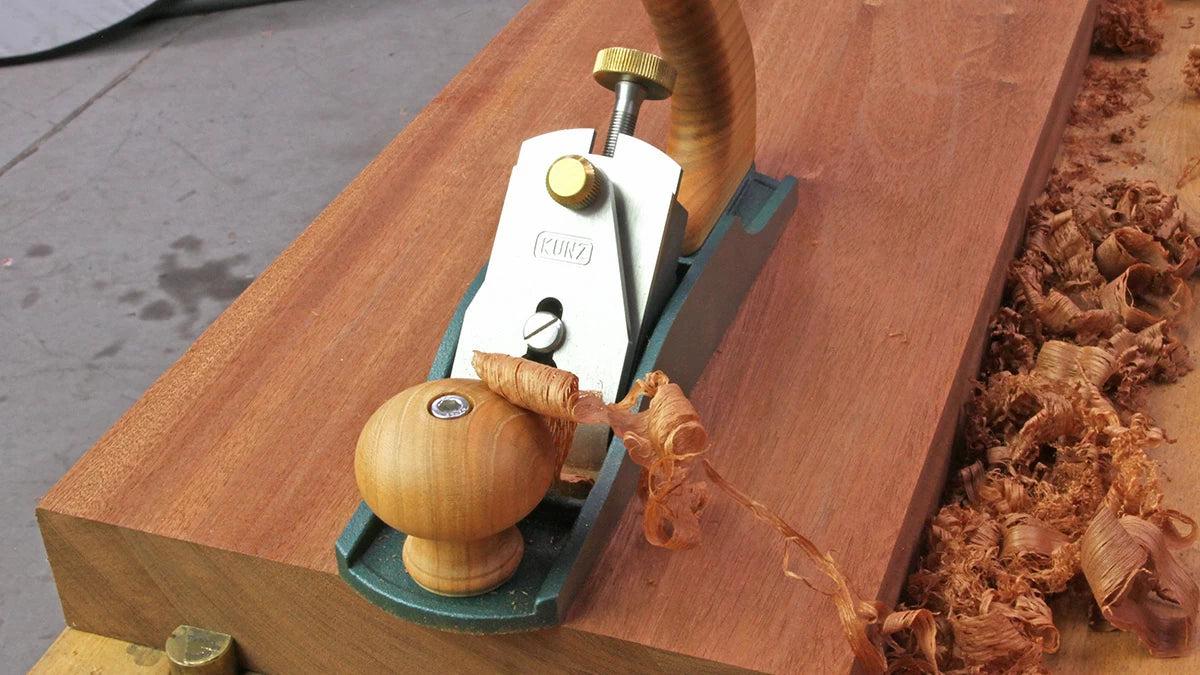
Go Forth and Plane
With these intriguing features, you get classic styling and top-quality performance at an affordable price and the plane arsenal to handle any grain the mysterious gods of lumber throw your way. These are perfect for the new hand-tool enthusiast or the committed Luddite cultist guarding their horde of non-electrical tools. Do not be afraid. The only thing that awaits you are thin gossamer shavings.



